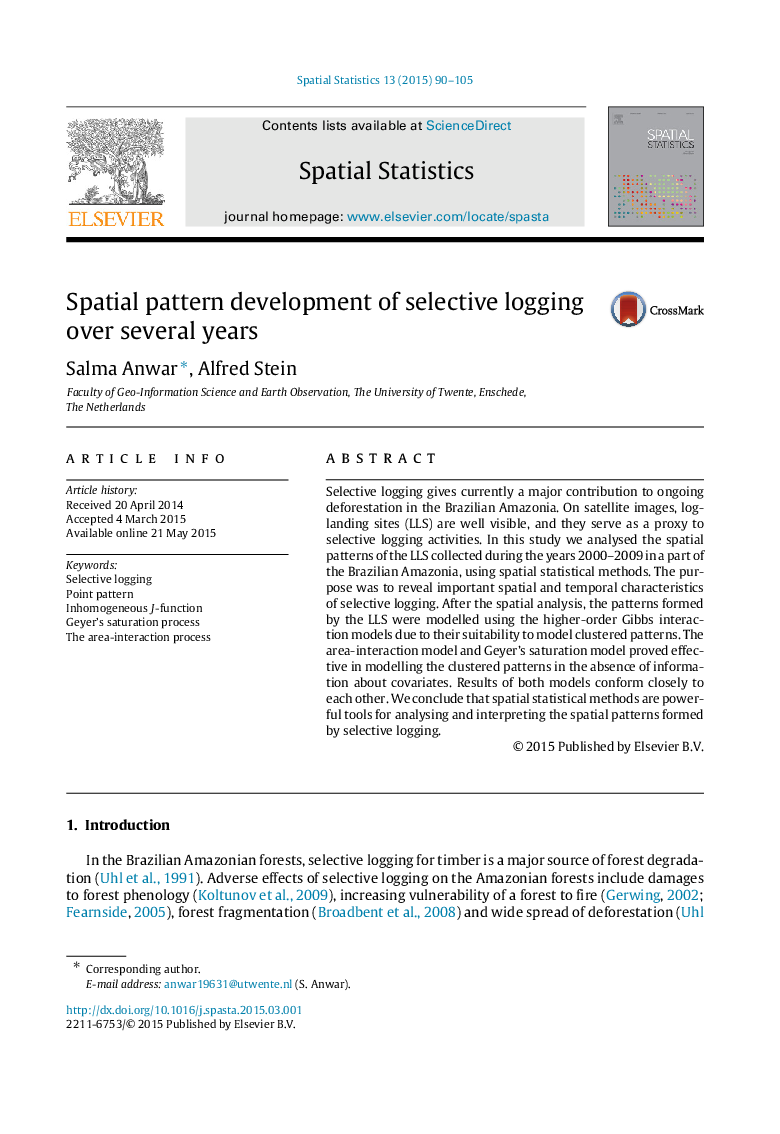| Article ID | Journal | Published Year | Pages | File Type |
|---|---|---|---|---|
| 1064540 | Spatial Statistics | 2015 | 16 Pages |
Selective logging gives currently a major contribution to ongoing deforestation in the Brazilian Amazonia. On satellite images, log-landing sites (LLS) are well visible, and they serve as a proxy to selective logging activities. In this study we analysed the spatial patterns of the LLS collected during the years 2000–2009 in a part of the Brazilian Amazonia, using spatial statistical methods. The purpose was to reveal important spatial and temporal characteristics of selective logging. After the spatial analysis, the patterns formed by the LLS were modelled using the higher-order Gibbs interaction models due to their suitability to model clustered patterns. The area-interaction model and Geyer’s saturation model proved effective in modelling the clustered patterns in the absence of information about covariates. Results of both models conform closely to each other. We conclude that spatial statistical methods are powerful tools for analysing and interpreting the spatial patterns formed by selective logging.
